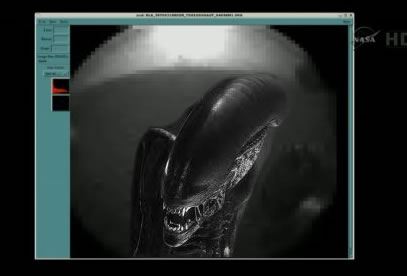While I have in prior writings and posts attacked naturalistic theories to explain the Star of Bethlehem as a historical, natural event, I also have encountered other approaches that have their own popularity. In a recent email, I was directed to the coverage of the Star in the Internet-distributed "documentary" Zeitgeist, which is filled with layers of conspiracy. The first third is an argument that Jesus didn't exist, and all of Christianity (and other religions?) is based on astrology or "astrotheology." This is largely the product of the self-published author D. M. Murdock, a.k.a. Acharya S.
What is the basic idea? At about the time of the winter solstice, the three stars of Orion's belt point at the rising sun, pointing through Sirius. This alignment takes place then at about Dec 25. There are also connections between Sirius' heliacal rising (first rising at sunrise in a year) and the summer solstice alleged Moreover, this was supposed to be celebrated and connected in ancient Egypt, thus making the Christians copy-cats. Thus the Star is fiction and based on Egyptian mythology, itself based on astronomy. Those details are best laid out by Acharya here.
Now, I am not the first to look critically at her claims concerning the Nativity of Jesus, and one place to look at a good examination is done by Richard Carrier here (and update here). Not only are there significant factual errors and unjustified assumptions, but there are good, scholarly-defended results that indicate a lack of historicity for these things (which I hope to detail in my future book on the subject). In particular, the stories of Daniel help explain a lot of the details of Jesus' birth story in Matthew, along with the Moses typology.
However, I haven't found so much detailing the problems with the Star story from Zeitgeist (and if someone finds some links, please share), so I will repost the message I sent back to an inquisitor (name redacted and the email improved for grammar and spelling.)
Hello XXX,
Thank you for the email and the links. I am familiar with the work of the author you have linked and her interpretation of the Star. However, I think you should be cautious in using her as an authority on this.
Consider her use of sources. Most all her secondary scholarship is at least a century old, a time when quality was much lower in scholarship. It's also a problem because her central point about the stars of Orion's belt called the Three kings by Egyptians has no support in the primary literature--actual ancient texts. It's also beside the point because Christians didn't refer to the Magi as kings until much later; same with their number three. That means the original story had nothing to do with three kings, thus unrelated to an alleged Egyptian myth.
There are other details that go against the story in Matthew. While the Magi follow the Star, the belt of Orion leads Sirius. And while Sirius is a star as was Matthew's Star, the Magi are not stars. Why these differences if the Christians were following Egyptian precedent?
There are also issues with the astronomy. The heliacal rising of Sirius is nowhere near the summer solstice, and the Egyptians cared rather little about solstices. Their agriculture didn't depend on the sun's position as other cultures but on the seasonal flooding of the Nile. (For example, the Maya didn't have seasons so they don't align their calendar with leap years as we do.) The claim about where the stars of Orion and Sirius point on the winter solstice is wrong. The belt has set by sunrise, and it's even worse with precession.
Lastly, the connection to December 25 is a false lead because, again, the Christians didn't think Jesus was born on that day until centuries later and usually figured different days; Clement of Alexandria gives several guesses, and none are in December, let alone the solstice.
Thus, all the historical and mythological connections are not valid, the astronomy is wrong, and the match between the alleged myth and the Gospel story is poor. That's a big overall negative assessment.
The much more popular account given by biblical scholars is citing Jewish literature which definitely influenced early Christianity, namely the Star Prophecy of Numbers 24:17. It was used by numerous Jews, including Josephus, rabbis in the Talmud, and the Qumran sect. This is the starting point I have been using in my research about the story, and I suggest the same for you own investigations. On the Nativity stories, the best book is still Raymond Brown's "Birth of the Messiah". I hope to have a future book to supplement Brown's work, but his book is magisterial.
I hope this helps you. In the mean time, I strongly recommend you be careful about your authorities. See what their sources are, if they cite primary literature rather than old, secondary literature, and if their work has had peer review. It's the only way to have some confidence in the facts presented; otherwise, your have to check everything yourself, thus making the book a pointless read since it didn't inform you but for your own research. Save yourself the time and headache.
Thanks again for your interest.
In summary, the astronomy is wrong, the astrology is wrong, the fit to Matthew's account is weak, and there are much better explanations. Obviously we have enough reason to be skeptical of the Zeitgeist version of the Star of Bethlehem, and it gives us reason to be skeptical of a lot more as well.
But does Numbers 24:17 explain the Star completely? I will have to say more on that later.
Edit: Apparently Acharya's first name is not "Dorothy", so I have adjusted the text above to reflect this.
Edit: Apparently Acharya's first name is not "Dorothy", so I have adjusted the text above to reflect this.







